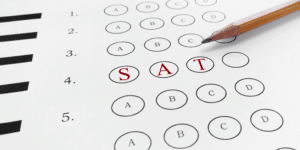It’s almost time to go back to school! Whether your child cannot wait to walk through those school doors, or is clinging onto these last weeks of summer, it is time to get organized for the new school year.
Lower elementary grade teachers may institute their own organizational tools: folders to send home, cubbies at school, school shoes, reading logs: but this doesn’t mean you’re off the hook!
Good organizational skills need to be modeled and reinforced, so here’s how you can help:
1. One is not enough: As a parent, you’re well aware that young children in elementary school tend to lose things (I’m sure they’d protest that things walk away or disappear). So, stay one step ahead of them and be prepared with some backups! While sending two of everything to school is not necessary (then they may lose two pairs of scissors!), it’s always good to have a backup at home, so you don’t have to be frantically looking for new supplies at the 11th hour. You may, however, consider sending several pencils and crayons or markers those are fairly cheap, easy to replace, and your kids are sure to need a lot of them.
2. Keep things contained: Children do well with structure, and containers minimize the chance of things wandering off. If children bring lunch to school, make sure they have a reusable lunch box. Where do pencils go? In a pencil case. This can be any shape, size, or color, as long as its primary function is to store your child’s school utensils (pencil, eraser, scissors, glue stick, crayons, markers, or pencil crayons). Homework is best kept in a folder with pockets (not three open sides). Pro tip: use one pocket (or folder) as an inbox, and one pocket (or folder) as an outbox. This helps keep track of where things go, and it allows children to clearly see their homework progress.
Work spaces also need to be contained. If possible, have your child work in one workspace and only one workspace at home. If it’s a desk in their room, then there is a natural place to leave items. But if they prefer to work at the kitchen table, it is important that they have a milk crate or shelf to store all of their belongings after they have finished their work. If your child occasionally works outside of the home (e.g. in a library), then their backpack can be their go-to container for school supplies.
3. Check! Check! Check!: Younger elementary school-aged children are still new to the school day ritual and may have trouble keeping track of what they will need (especially as this can change year to year). A visual checklist can be helpful to make your child an active member of your evening or morning routine (bonus: it will also help their literacy!). You may need to make this checklist for them, or they may be able to help you with what their school essentials entail.
4. Routines lead to readiness: Spontaneity is fun and necessary, but when it comes to organization, routine is key. Pick a time when your child will do their homework and pick a time to pack his or her bag for each day. If your child lives in multiple homes, then separate routines may be necessary — it’s not about the number of routines, it’s that they are in place. Routines reduce confusion, potential power struggles, and anxiety since they allow children to know what is expected of them.
Have a great school year!




